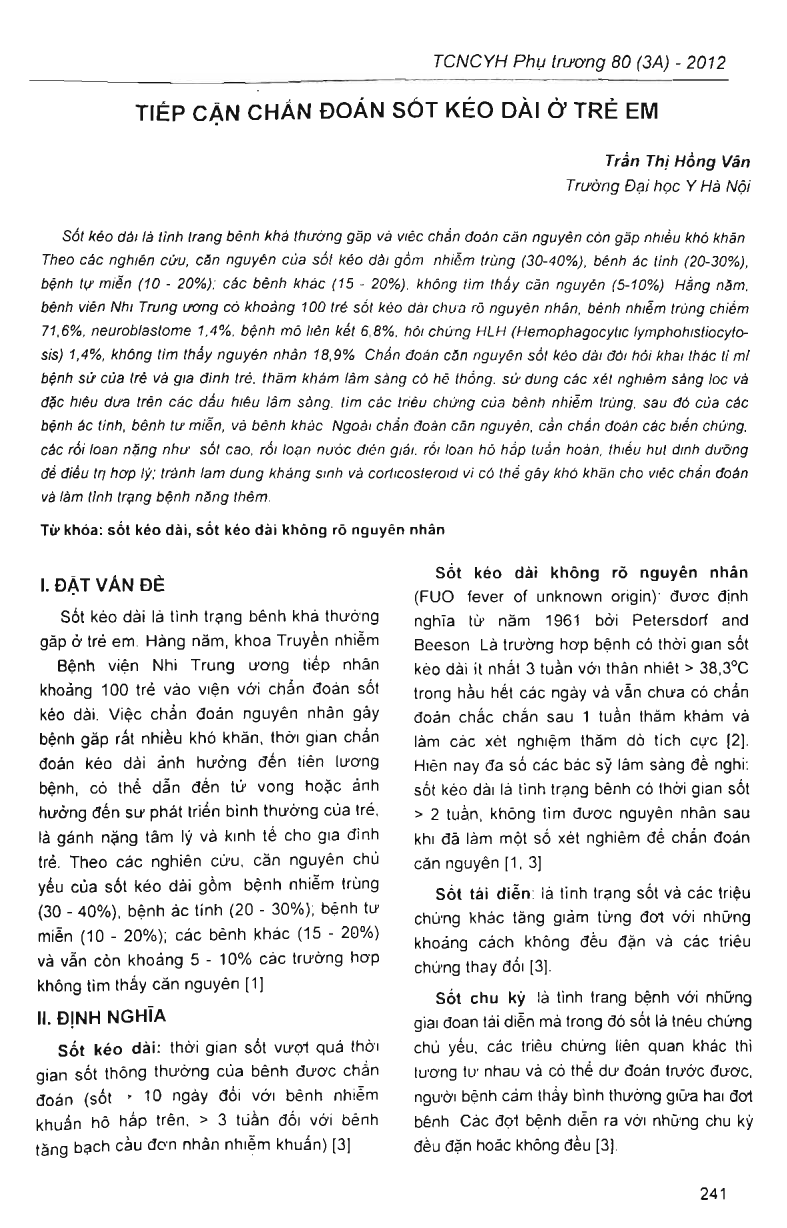
Prolonged fever and fever of unknown origin (FUO) are common and difficult to diagnose in many cases. About 100 patient admitted to Infectious Diseases Depatment of National Hospital of Pediatrics with diagnosis of prolonged fever and fever of unknown origin (FUO) every year. The literature also revealed that FUOs are caused by infections (30-40 percent), neoplasms (20-30 percent), autoimmune diseases (10-20 percent), and numerous miscellaneous diseases (15-20 percent), between 5 and 15 percent of FUO cases defy diagnosis, despite exhaustive studies. Since April 2010 to March 2011, there ware 74 children admitted to Infectious Diseases Depatment of National Hospital of Pediatrics with diagnosis of prolonged fever, including infections 71.6 percent, neoplasms 1.4 percent, autoimmune diseases 6.8 percent, Hemophagocytic lymphohistiocytosis (HLH) 1.4 percent and unknown causes 18.9 percent. The evaluation of FUO requires a thorough history and physical examination supplemented by a few screening laboratory tests, and additional laboratory and radiographic tests as indicated by the history or abnormalities found on examination or initial screening. Treatment for patient is symtomatic, emergency and causes. Fever and infection in children are not synonymous; antimicrobial agents and corticosteroids should not be used widely, and empirical trials of medication should generally be avoided.
- Đăng nhập để gửi ý kiến
